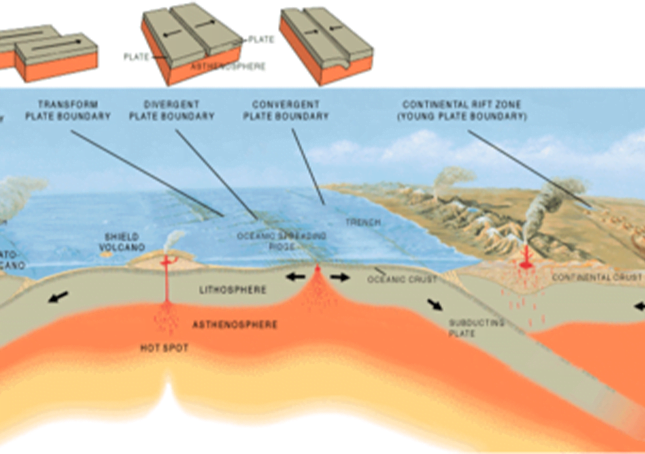Geology

Geology (from the Ancient Greek γῆ, gē (“earth”) and -λoγία, -logia, (“study of”, “discourse”))[1][2] is an Earth science concerned with the solid Earth, the rocks of which it is composed, and the processes by which they change over time. Geology can also include the study of the solid features of any terrestrial planet or natural satellite such as Mars or the Moon. Modern geology significantly overlaps all other Earth sciences, including hydrology and the atmospheric sciences, and so is treated as one major aspect of integrated Earth system science and planetary science.
Geology describes the structure of the Earth on and beneath its surface, and the processes that have shaped that structure. It also provides tools to determine the relative and absolute ages of rocks found in a given location, and also to describe the histories of those rocks.[3] By combining these tools, geologists are able to chronicle the geological history of the Earth as a whole, and also to demonstrate the age of the Earth. Geology provides the primary evidence for plate tectonics, the evolutionary history of life, and the Earth’s past climates.
Geologists use a wide variety of methods to understand the Earth’s structure and evolution, including field work, rock description, geophysical techniques, chemical analysis, physical experiments, and numerical modelling. In practical terms, geology is important for mineral and hydrocarbon exploration and exploitation, evaluating water resources, understanding of natural hazards, the remediation of environmental problems, and providing insights into past climate change. Geology is a major academic discipline, and it plays an important role in geotechnical engineering.
Geology is the science and study of the solid and liquid matter that constitutes the earth. The field of geology encompasses the study of the composition, structure, physical properties, dynamics, and history of Earth materials, and the processes by which they are formed, moved, and changed. The field is a major academic discipline, and is also important for mineral and hydrocarbon extraction, knowledge about and mitigation of natural hazards, some Geotechnical engineering fields, and understanding past climates and environments.
The geology of an area evolves through time as rock units are deposited and inserted and deformational processes change their shapes and locations.
Rock units are first emplaced either by deposition onto the surface or intrude into the overlying rock. Deposition can occur when sediments settle onto the surface of the Earth and later lithify into sedimentary rock, or when as volcanic material such as volcanic ash or lava flows, blanket the surface. Igneous intrusions such as batholiths, laccoliths, dikes, and sills, push upwards into the overlying rock, and crystallize as they intrude.
After the initial sequence of rocks has been deposited, the rock units can be deformed and/or metamorphosed. Deformation typically occurs as a result of horizontal shortening, horizontal extension, or side-to-side (strike-slip) motion. These structural regimes broadly relate to convergent boundaries, divergent boundaries, and transform boundaries, respectively, between tectonic plates.
